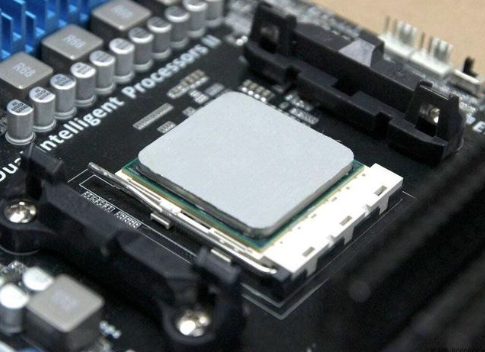Which is better, thermal grease or thermal silicone?
Thermally conductive materials play a key role in electronic devices and heat dissipation applications. Thermal grease and silicone are common thermal interface materials used to improve heat dissipation. Although both of them have thermal conductivity, there are some differences between the two. This article will delve into the characteristics, uses, and differences of thermal grease and thermal silicone.

Features and composition:
Thermal grease is a thermal interface material with good thermal conductivity. It consists of a silicone oil and a filler, usually a metal oxide. Fillers work to increase the thermal conductivity path and improve heat conductivity, while silicone fluids act to fill voids and protect electronic components. Thermally conductive silica gel is an elastic gelatinous material composed of a silica gel matrix and a thermally conductive filler.
Thermal Conductivity:
Both thermal grease and thermal silicone have high thermal conductivity and can transfer heat quickly. However, thermal grease typically has a higher thermal conductivity, which makes it more common in applications where heat dissipation is critical. Thermally conductive silicone has a low thermal conductivity, so it is suitable for some scenarios with relatively low requirements for heat dissipation.
Applications:
Thermal grease is primarily used in applications that need to fill in small gaps and improve thermal conductivity. It is commonly used as a contact surface between a CPU and a cooler, or between other electronic components and a cooling device. Thermally conductive silicones are commonly used in applications such as extruded thermal pads, heat dissipation pads, thermal pads, etc., where soft, compressible, and elastic materials are required to fill gaps and dissipate heat.
Physical Properties:
Thermal grease typically has a high viscosity and can fill tiny gaps and irregular surfaces to ensure maximum contact and heat transfer. Thermally conductive silicone has good flexibility and elasticity, which can adapt to irregular surfaces and maintain good thermal conductivity.
Advantages and disadvantages:
Thermal grease
Advantage:
1. The excellent viscosity makes silicone grease easy to lay on the surface of heat dissipation equipment.
2. Excellent electrical insulation and thermal conductivity, as well as low oil separation, high voltage resistance, and waterproof.
Disadvantages:
Apply too much thermal grease, otherwise it will affect the thermal conductivity. Excessive use of the grease for too long can lead to an increase in thermal resistance and aging.
Thermally conductive silicone
Thermally conductive silicone has a solid appearance and is applied to the contact surface between the electronic product and the heat dissipation facility. It has an operating range of -60°C-280°C.
advantage
1. It is not corrosive to metals and non-metals.
2. Good thermal conductivity and insulation, improve the service life of the product.
3. It is molded into a solid substance with high hardness in a short time, and the finished thermally conductive silica gel is added with a viscous substance, which is more adhesive than silicone grease.
Disadvantages:
It is easy to "stick over" electronic equipment and heat dissipation facilities. In contrast, in terms of operating temperature, thermal conductive silica gel is more widely used than thermal grease. In terms of thermal conductivity, thermal grease is slightly superior. In short, only by selecting products with different characteristics according to the needs of the product can the functional advantages of the product be brought into play.
Precautions for use:
When applying thermal grease or silicone, the following should be noted:
· Clean surfaces: Always clean contact surfaces to remove dust, grease, and other dirt before application.
· Moderate use: Avoid excessive use of thermally conductive materials, which may cause extrusion, leakage or reduced heat dissipation.
· Uniform distribution: Ensures that the thermally conductive material is evenly applied across the entire contact surface, filling in tiny gaps and improving thermal conductivity.
Thermal grease and silicone are both common thermal interface materials used to improve heat dissipation. Thermal grease excels in applications that need to fill small gaps and improve thermal conductivity, while thermally conductive silicones are ideal for scenarios that require soft, compressible, and elastic materials to fill gaps and dissipate heat. Thermal grease has a high viscosity and is able to fill irregular surfaces and ensure maximum contact, thus improving heat transfer. Thermally conductive silicone has good flexibility and elasticity, and can adapt to various shapes of surfaces and maintain good thermal conductivity.
.png)
All in all, specific application needs need to be considered when selecting a thermally conductive material. Thermal grease is often a better choice if thermal conductivity and filling capacity are high and need to fill small gaps. Thermally conductive silicones may be more suitable if soft, compressible, and elastic materials are needed to accommodate irregular surfaces or require some extrusion capacity.








